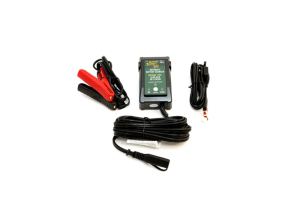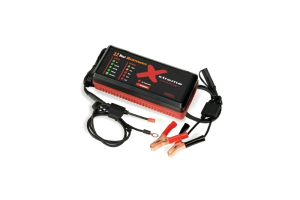How to Test a Battery for Drain Using a Voltmeter
How to Test a Battery for Drain Using a Voltmeter
When a battery unexpected loses its charge after being unused for a short period of time,
the culprit is often a malfunctioning electronic system that is attached to the battery. This situation is referred to as parasitic battery drain or parasitic load, and it most often occurs in vehicle batteries. Car and motorcycle batteries have dozens of electrical systems attached to them, and they may be drawing a charge off the battery when they are supposed to be shut off. To fix this problem, it is first necessary to determine whether parasitic battery drain is actually the problem, but this test requires the use of a voltmeter or a digital multimeter.
What is a Voltmeter?
A voltmeter is a device that can be attached to an electrical circuit to test how many volts of electricity are moving through it. The meter consists of a base unit, a display, a positive test probe and a negative test probe. Older meters are purely analog and use moving-needle displays. However, newer meters are digital devices and may be combined with other types of electrical meters into what is known as a multimeter. When the probes come into contact with a circuit, the current runs through the meter where it is measured and revealed on the display.
Voltage Draw Test
Using a meter to test for electricity that is being drawn out of a battery’s main line is known as a voltage draw test. This test is most easily performed with a meter that measures amperes. Most meters will have what is called a com port. The negative lead must be attached to the com input, and the positive lead must be attached to the input used to test 10 amps or 20 amps, depending on the type of battery being tested.
Once the meter is ready, it is necessary to turn off the vehicle or the piece of equipment to which the battery is connected. For some vehicles, you must wait for several minutes until all of the electrical systems shut down or go into sleep mode. At this point, the negative lead must be disconnected from the battery post. The positive lead from the meter must then be connected to the battery post while the meter’s negative lead is connected to the battery’s negative lead, which is the one that was just removed from the post.
Sometimes, when the voltmeter is connected, it will cause certain electrical systems to come out of sleep mode. To be sure that all systems are off, it is necessary to wait for the systems to go back to sleep. If the display on the meter shows that over 25 milliamps are being drawn from the battery, then some sort of parasitic drain is occurring. The system causing the drain can be detected by removing and replacing the fuses one at a time until the meter reads less than 25 milliamps. Once the correct fuse is found, each device that uses the fuse must be disconnected, one at a time, until the system causing the drain is discovered.









